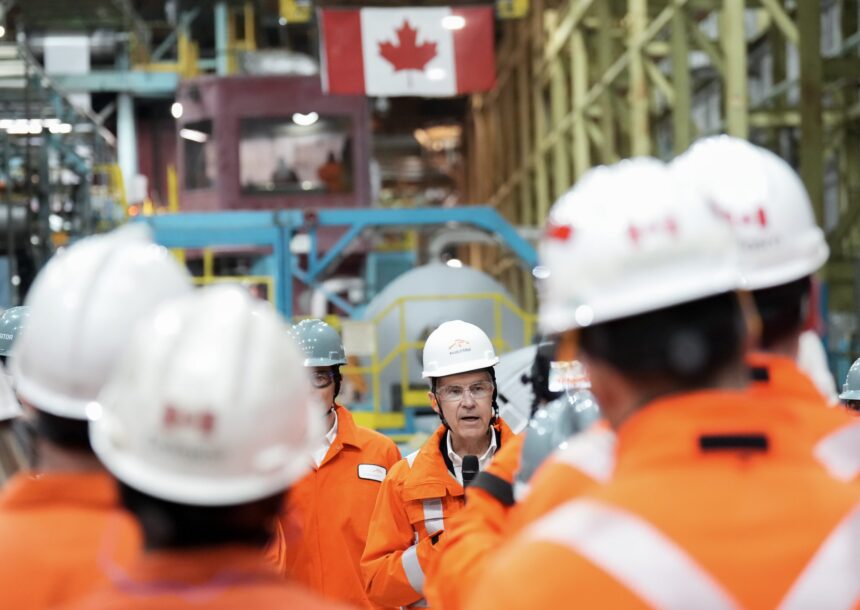In a calculated move that signals the federal government’s renewed commitment to Canada’s industrial heartland, Finance Minister Mark Carney arrived in Hamilton today, unveiling an ambitious framework to revitalize the nation’s struggling steel sector. Standing against the backdrop of ArcelorMittal Dofasco’s sprawling facility, Carney’s presence in the Steel City represents more than a routine ministerial visit—it marks a pivotal moment for an industry that employs thousands of Canadians while facing unprecedented global pressures.
“The future of Canadian steel isn’t just about preserving jobs—it’s about positioning Canada as a global leader in low-carbon industrial production,” Carney declared to an audience of industry executives, union representatives, and local officials. “Hamilton stands at the epicenter of this transformation.”
The comprehensive plan revealed today builds upon the government’s previous $400 million commitment to support ArcelorMittal Dofasco’s transition to electric arc furnace production—a shift that promises to reduce carbon emissions by approximately 3 million tonnes annually, equivalent to taking nearly 900,000 cars off Canadian roads.
Industry analysts note that Carney’s focus on Hamilton’s steel sector arrives at a critical juncture. Chinese steel overproduction has flooded global markets, while American protectionist policies have created additional headwinds for Canadian producers. The United Steelworkers union reports that over 1,200 positions have been eliminated across Ontario’s steel operations in the past 18 months alone.
“Minister Carney recognizes what’s at stake here,” said Dr. Melissa Patterson, industrial policy specialist at McMaster University. “Hamilton’s steel industry isn’t merely fighting for survival—it’s positioning itself to thrive in a carbon-constrained economy. The government’s support signals that they understand the strategic importance of maintaining domestic steel production capability.”
The finance minister’s plan extends beyond immediate financial relief, outlining a comprehensive approach that includes enhanced carbon border adjustments, targeted research and development tax credits for green steel innovation, and workforce training initiatives designed to ensure Hamilton’s manufacturing workforce can transition alongside the industry.
Labour leaders cautiously welcomed Carney’s announcements while emphasizing the need for tangible outcomes. “We’ve heard promises before,” noted James Rivera, regional representative for the United Steelworkers. “Our members need to see concrete actions that protect good-paying jobs while supporting the industry’s necessary evolution.”
The minister’s Hamilton visit underscores a broader economic strategy that places industrial policy at the center of Canada’s climate and economic security objectives. With steel production representing approximately 7% of global carbon emissions, the transformation of this essential industry represents both a challenge and opportunity for Canadian climate leadership.
Municipal officials emphasized the local significance of today’s announcements. “Hamilton’s identity has been forged in steel for generations,” Mayor Samantha Williams said. “Minister Carney’s presence here acknowledges that our community’s future remains intertwined with the industry’s success.”
As global markets continue evolving amid increasing climate pressures and geopolitical tensions, the question remains: can Canada’s strategic support for its steel sector create a sustainable competitive advantage while meeting ambitious climate targets, or will international market forces ultimately determine the fate of Hamilton’s industrial legacy?
Read more at CO24 Business and Canada News

























